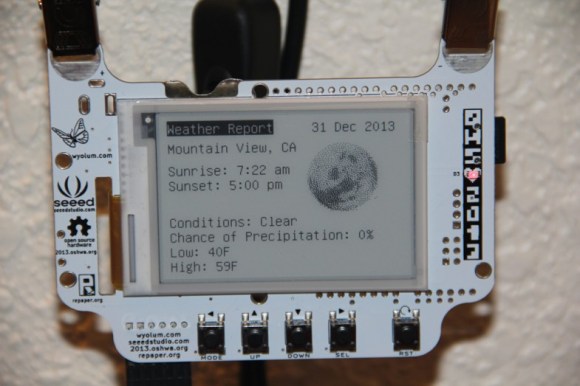[Jeremy Blum] converted his 2013 Open Hardware Summit badge, also known as the BADGEr, into an ePaper weather station. We’ve looked at the 2013 OHS badge in the past, and the included open source RePaper display makes it an interesting platform to hack.
To fetch weather data, the badge is connected to a Raspberry Pi using an FTDI cable. A Python script uses the Python Weather API to poll for weather data. It then sends a series of commands to the BADGEr using pySerial which selects the correct image, and inserts the current weather data. Finally, a cronjob is used to run the script periodically, providing regular weather updates.
If you happen to have one of the badges, [Jeremy] has provided all of the files you’ll need to build your own weather station on Github. Otherwise, you can take a look at the RePaper project and WyoLum’s eReader Arduino Library to build your own ePaper project.






 [Jack], a mechanical engineer, loom builder, and avid sailor wanted an autopilot system for his 1983 Robert Perry Nordic 40 sailboat with more modern capabilities than the one it came with. He knew a PC-based solution would work, but it was a bit out of reach. Once his son showed him an Arduino, though, he was on his way. He sallied forth and built
[Jack], a mechanical engineer, loom builder, and avid sailor wanted an autopilot system for his 1983 Robert Perry Nordic 40 sailboat with more modern capabilities than the one it came with. He knew a PC-based solution would work, but it was a bit out of reach. Once his son showed him an Arduino, though, he was on his way. He sallied forth and built 










